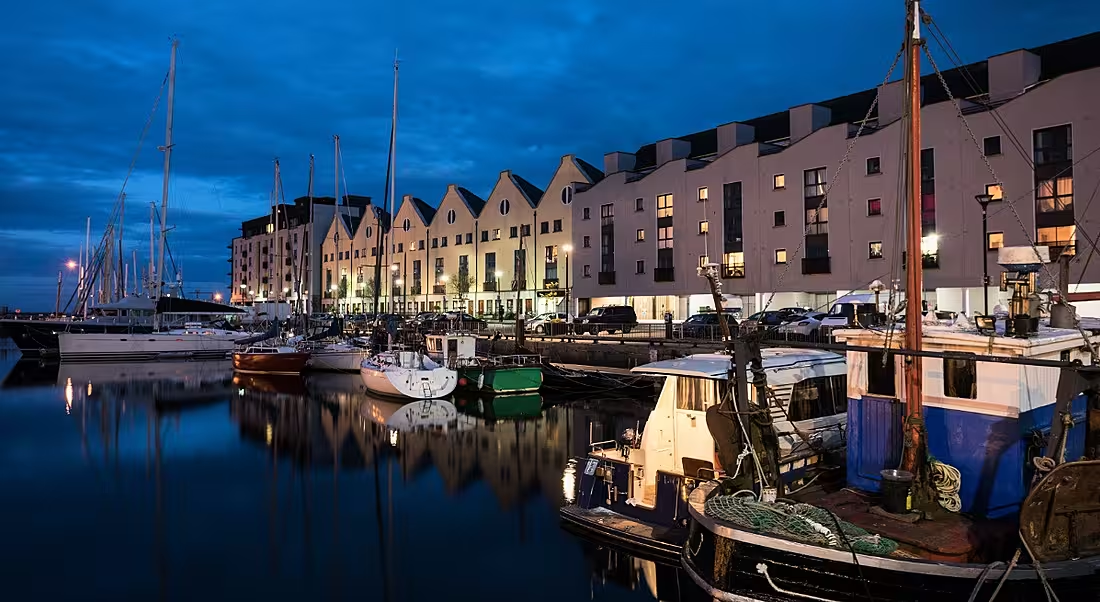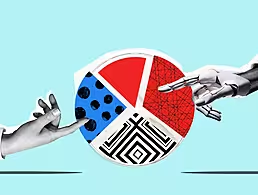Senior vice-president of R&D at Genesys, Joe Smyth, explains why Galway is ‘a great place for a tech career’.
Galway is not just the city of culture, a major tourist hub and a university town of 24,000 students. It also has a thriving tech scene where talented and ambitious developers, UX designers, data scientists and product managers can build world-class careers.
Galway has significant tech clusters in unified communications and customer experience software, gaming and medtech. All the major players in customer experience software have significant software R&D operations in the city – Genesys, Cisco, Avaya, Aspect. On the gaming front, we have iconic companies such as EA and Romero Games (the team that built Doom), and the medical devices work happening in the city is world class.
Galway is now into its third generation of software engineering. People coming to the city today can be assured that they can build a world-class career in the region.
Origins of the Galway tech scene
The origins of the Galway tech scene can be traced back to the arrival in the early 1970s of Digital Equipment Corporation (DEC) and Northern Telecom (Nortel). Both were giants in their fields of mini computers and telecoms, respectively. Both became massive employers in the city – by the late 80s, DEC had 2,000 employees and Nortel 1,200 employees.
The downsizing of DEC in 1993 unleashed a wave of creativity in the city with indigenous companies such as SyberNet, Storm Technology and NetFort emerging in its wake. There are still more than 800 people employed in HP Enterprise and DXC, the current heirs of DEC.
Importance of Irish mammies
My own story is intertwined with both DEC and Nortel, and serves as an example of the kind of long-term career you can have in Galway.
After graduating from the University of Limerick in 1988 with a degree in electronic engineering, I ended up in Apple in Cork, working as a QA automation engineer. This was way before REST APIs and automation frameworks, so it meant building all sorts of fun gear that took circuit boards fresh off the production line, engaging their connectors and testing everything from video and network connectors through to disk and audio I/O.
After two years I got a year-long rotation at Apple headquarters in Cupertino, Silicon Valley, where I got to work on the device driver for Apple’s first ever ethernet controller. The CEO at the time of the Steve Jobs interregnum, John Sculley, regularly dropped into the lab to gauge progress. It was there that I learned that Irish software engineers were just as good as their American counterparts.
‘The wider tech scene in Galway has grown significantly and boasts a range of tech multinationals’
I returned to Ireland and followed my heart back to Galway and landed in DEC. I started work on the firmware for their flagship Alpha RISC processor-based compute platform. After just nine months they declared they were shutting us down in Galway, but taking four engineers to the US to complete the project. So two weeks after I got married (to a very tolerant woman) we headed off to Merrimack, New Hampshire.
But God bless Irish mammies, as every week my mother mailed on the hiring section of The Irish Times (there was no online recruiting back then) and ensured we never really settled in the US.
The power of voice (over IP)
Meanwhile, back in Ireland, Barry O’Sullivan, who had become a senior figure in Nortel product leadership, was establishing a software design centre in Galway for Nortel, helping to offset the global shift of electronics manufacturing to the far East. This kicked off in earnest in 1995 and I spotted a role as a senior software engineer with Nortel in Galway that actually looked pretty interesting.
In May 1995, I was home for a friend’s wedding and did the interview. By July, we were home and I started working on the design of line cards for Meridian phone systems. At the time, there was an experimental technology called ‘voice over IP’ (VoIP). It had the advantage that it worked over the same cabling as your network and allowed you to just pick up your phone and move desks (which back then was magic). So we started to design VoIP systems way before anyone had heard about Skype. We designed a range of line cards that bridged basic phone lines to VoIP systems.
By 2001, the line cards we had designed were Nortel’s highest selling Meridian expansion card and the world had woken up to voice as being just another type of data and network traffic. Our team in Galway had built up an impressive array of patents in VoIP and solved many of the toughest problems. In 2001 the dot-com bubble burst and Nortel went into a tailspin. Our team got moved from VoIP development to take over the development of Nortel’s contact centre software.
I took over as R&D manager for all the Nortel channels that were not voice, which back then meant email and web chat. This was all before the era of cloud computing, so our hardest task was being able to support up to 1,000 agents in a single server architecture and solving uptime issues with high availability hardware (Google it, you will weep) and hot-swap software mechanisms (Google this and weep some more).
But we had a great team and we built a very solid product for customer care through digital channels with customers from New Zealand to Texas.
From mid-life crisis to machine learning
By 2007, I was ready for a change and the chance came again when Cisco came to town. I joined as employee number two and set about building a team from scratch to develop Unified Communications software. VoIP had morphed from hardware into software-based Unified Communications in the years I had stepped away from it and we focused on building softphones for enterprise customers.
By 2013, we had built the team to more than 200 software engineers and, with over 20 years in the industry, I felt a mid-life crisis coming on. Cloud computing was taking off and I felt the need to embrace the future. In November 2013, I left Cisco to start Altocloud. We had an idea around WebRTC, which put all the capabilities of VoIP voice and video into the browser, led by Chrome and Firefox.
We expanded the idea further to gather the context of what the customer was doing on the business website so a summary could be presented to an agent to speed up resolution of the customer query and “never ask the same question of the customer twice”.
I started gathering together a small team to build an actual product instantiation of our concept. Our elevator pitch was that customer care systems were still treating customers as if it was 1993, not 2013.
Our goal was to tightly integrate the web into customer care. We very quickly realised that with all the data we were collecting, we would be foolish not to apply machine learning to the problem and try to predict when a customer was about to call and pre-empt this with an offer of chat or a call back. We went all-in on cloud and built everything with a DevOps-driven micro-service architecture at its core.
We had come a long way from the days of Nortel’s on-premise server-based software to where stateless services made high availability just happen. Servers moved from being house pets to herd animals. Altocloud moved into a room in the start-up incubator in the Tech Transfer Office in NUI Galway, and we hired some amazing software engineers and data scientists who were just finishing up their master’s and PhDs from the Insight SFI Research Centre, also on the NUI Galway campus.
We had a vision, great people and some funding. We got iterating.
Partying in Vegas
Four years, a hell of lot of software development and the highs and lows of start-up life later, Genesys called us up and said they’d like a demo. By this time we had grown to 25 staff, primarily in software development and machine learning, we had a solid set of customers, and we had moved in April 2016 from the NUI Galway Tech Transfer Office into the PorterShed as their first tenant.
We did a sequence of demos and after an intense couple of months of due diligence, Genesys acquired Altocloud in February 2018.
We always had a running line that if we ever had an exit we’d bring the team to Vegas. In March of 2018, we made good on that promise and over St Patrick’s weekend we had an amazing party with the whole team on the strip.
Next steps
But I also had a new mission to build out an AI Centre of Excellence for Genesys in Galway. We are well down the road to that goal now and have more than 100 staff in Galway working on Predictive Engagement (as Altocloud is now called), Conversational AI and Predictive Routing.
We are building an AI platform for Genesys that forms the basis for our personalised customer experience. We are making good on the Altocloud promise to never have a customer answer the same question twice and have a business anticipate their needs and free customer care from the dreaded ‘on-hold’ experience. Our plans see us growing to more than 200 staff over the next few years.
My own personal journey has seen me join Genesys as VP of R&D for AI within the AI group, and I now lead the Genesys AI group R&D team worldwide, all possible from Galway. And we are based in the city centre, where we get the whole range of the cultural activities on our doorstep.
Galway’s flourishing start-up scene
In parallel, the wider tech scene in Galway has grown significantly and boasts a range of tech multinationals including Fidelity Investments, MetLife and a swathe of newcomers led by SmartBear, MathWorks, Rent the Runway and Soti.
The Galway Technology Centre and the PorterShed, working with NUI Galway, Insight and GMIT, plus the IT Association of Galway, have driven a flourishing start-up scene with notable mentions such as Siren, Joulica and Pip IT, plus a host more.
Galway truly is a great place for a tech career.
By Joe Smyth
Joe Smyth is the senior vice-president of research and development at Genesys. He is a technical leader with proven capabilities in idea incubation, innovation, major program execution, customer engagement and people leadership.




